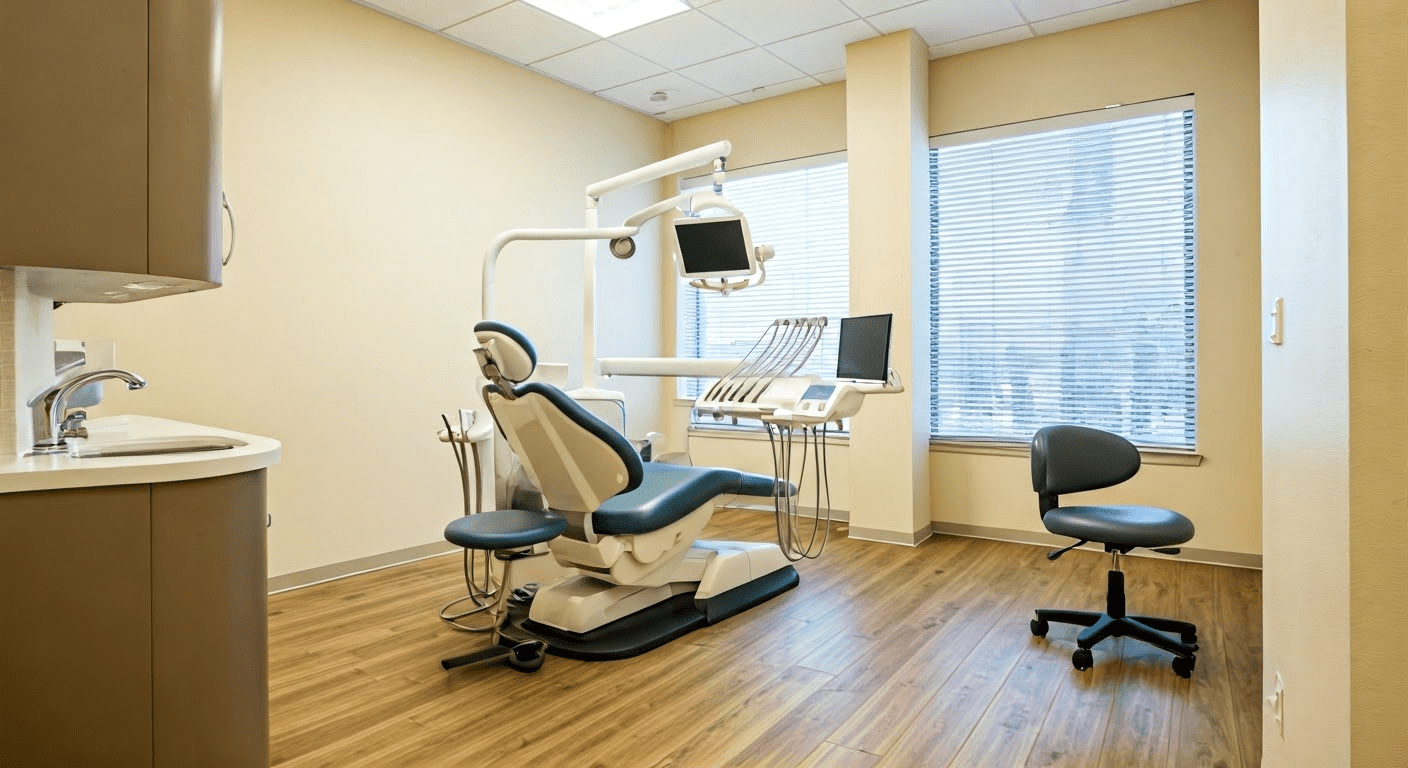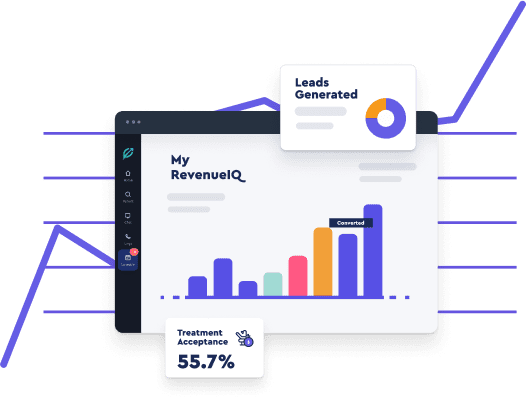How To Cut Admin Work with Automated Patient Scheduling?

Your front desk is drowning in calls.
Patients are put on hold, voicemails pile up, and appointment slots disappear before schedules are even updated.
Then come the no-shows—patients who never confirmed, forgot, or simply didn’t show up. Meanwhile, your staff scrambles to fill last-minute cancellations, manually reschedule appointments, and chase down confirmations.
This isn’t just inefficient—it’s a constant drain on time, revenue, and patient trust.
Every missed call is a lost opportunity.
Every scheduling error creates frustration.
Every no-show costs money.
The worst part? It’s completely avoidable.
By not automating medical appointments and patient scheduling in your organization, you’re making it harder for patients to book available time slots, and harder for your practice to grow.
If your scheduling still relies on phone calls, endless back-and-forths, and manual reminders, you’re literally wasting time—yours and your patients’.
It’s time to fix this.
The Hidden Costs of Manual Patient Scheduling
Most practices don’t realize how much revenue they’re losing due to inefficient scheduling.
Let’s break down what’s actually happening when your scheduling process is manual:
1. Your Staff Is Stuck With Phone Tag
Your front desk spends hours answering calls, rescheduling appointments, and leaving voicemails that rarely get returned.
Every back-and-forth eats into time that could be spent improving patient experience, handling urgent requests, or managing in-office operations. Instead of focusing on high-value tasks, your staff is buried in a never-ending cycle of scheduling chaos, contributing to high call center volume.
2. No-Shows and Late Cancellations Are Bleeding Revenue
Every missed appointment is lost revenue.
If your average appointment is worth $150 and you have just three no-shows a day, that’s nearly $10,000 lost every month.
Relying on staff to manually confirm appointments is unreliable, and last-minute cancellations leave you scrambling to fill gaps. The financial impact? Huge.
3. Patients Expect Convenience—And You’re Not Providing It
Your patients book flights, order groceries, and schedule car rides in seconds—yet they still have to call, wait on hold, and play voicemail tag just to see their healthcare provider? This frustrates them and often pushes them toward competitors who make booking effortless. New patient acquisition is critical, as patients today expect online scheduling for seamless booking, instant confirmations, and easy rescheduling. If you’re not offering that, you’re making it harder for them to choose you.
4. Overbooking, Underbooking, and Scheduling Errors Keep Happening
Mistakes happen when scheduling is manual.
Double bookings, forgotten follow-ups, and gaps in the calendar lead to inefficiencies that cost both time and money. Staff is constantly adjusting, patients get frustrated, and the practice never runs at full efficiency.
5. Administrative Costs Keep Climbing
The more manual your scheduling is, the more staff you need to handle it.
If your front desk is overloaded with scheduling tasks, that means higher payroll costs and lower productivity. And if your team is too overwhelmed to follow up properly? That’s even more missed revenue and unhappy patients.
How Automated Patient Scheduling Solves These Challenges?
By replacing outdated, time-consuming processes with AI-powered, HIPAA-compliant medical scheduling software, you eliminate inefficiencies, reduce lost revenue, and create a seamless experience for both staff and patients.
Here’s how automation tackles each of the major issues and informs better business decisions:
1. No More Phone Tag—Patients Can Book Instantly
Instead of spending hours making and returning phone calls, your patients can schedule their own medical appointment management online using patient scheduling software or through a mobile app, anytime, anywhere.
With Online Appointment Booking, available slots sync directly with your practice management system (PMS), ensuring real-time accuracy and allowing them to schedule appointments and select appointment type seamlessly with ease of use. This means fewer missed opportunities and a dramatic reduction in front desk workload.
For patients who still prefer calling, software solutions like PbN Voice ensures a smoother experience. It streamlines call tracking, voicemail management, and response handling, so no inquiry is left unanswered.
2. Stop No-Shows with Smart, Automated Follow-Ups
Missed appointments hurt your revenue, but most no-shows happen because patients forget or don’t get an appointment reminder in time. Automated Reminders and Two-Way Texting let you send confirmations, appointment reminders, and follow-up messages through SMS text or email—on a schedule that actually works for your patients.
And if someone cancels? The system automatically fills gaps with waitlist patients, maximizing your appointment capacity without manual effort.
3. Patients Expect Convenience—Give It to Them
Patients don’t want to wait on hold. They don’t want to go back and forth via email. They want easy, digital access.
With Webchat and Instant Patient Communications, they can ask questions, confirm appointments, and even reschedule—without ever having to call your office. And with a Patient Portal, they can check upcoming appointments, fill out forms, and manage their own information in one place.
4. Eliminate Scheduling Errors and Optimize Patient Flow
Automation eliminates double bookings, gaps in the schedule, and forgotten follow-ups, enhancing patient engagement and patient satisfaction tailored to specific needs, and show rates across various health systems. Patient Flow tools provide a clear, real-time view of scheduling, records, and communications so the entire office stays on track.
With Practice performance dasboards, you also get insights into scheduling trends, helping you fine-tune operations, reduce bottlenecks, and optimize appointment slots based on actual data—not guesswork.
5. Reduce Administrative Overhead Without Sacrificing Quality
By automating the most time-consuming parts of scheduling, your team can focus on patients and spend less time performing repetitive manual tasks.
- Digital Patient Forms- Streamline intake, so staff doesn’t waste time collecting information manually.
- Self-Check-In Kiosks– Eliminate front-desk bottlenecks and reduce wait times.
- TeamChat- Keeps office communication smooth and efficient, so scheduling changes and urgent updates don’t get lost in the shuffle.
6. Get Smarter About Your Marketing and Retention
Scheduling automation isn’t just about efficiency—it’s also about growing your practice. Utilizing practice performance software can help you with things like:
- Custom Campaigns- Reach out to patients at the right time, whether it’s for a follow-up, special offer, or reactivation.
- Marketing ROI tracking- Lets you see what’s working, so you can invest in the right strategies.
- Collect & Manage Reviews- Ensures happy patients leave 5-star feedback, boosting your reputation and attracting more new bookings.
How Dentistry for Kids Reduced Their Time Spent on Administrative Tasks
Dentistry for Kids, a busy pediatric dental office, faced data overload, scheduling inefficiencies, and missed revenue opportunities.
Their PMS provided data and analytics, but it wasn’t structured in a way that allowed them to optimize their scheduling or track lost revenue effectively.
Switching to PbN’s automation tools gave them complete control over their operations.
Want to know how they did this? Get access to the entire case study here.
1. From Data Overload to Clear, Usable Insights
Before automation, their team spent too much time trying to manage schedules manually.
Missed follow-ups, inconsistent tracking, and a lack of real-time insights led to gaps in the schedule and lost revenue.
PbN’s Practice IQ solved that by providing:
- Real-time tracking of appointment trends and patient flow
- Clear visibility into production goals and revenue opportunities
- Automated reporting to identify inefficiencies instantly
2. Faster Insurance Verification
Manually navigating multiple portals was time-consuming and inefficient. PbN’s automated verification streamlines the process by:
- Instantly verifies insurance
- Centralizes all details in one place
- Reduces staff workload
3. Smarter Scheduling & Follow-Ups
No-shows and last-minute cancellations disrupted their schedule, leading to lost revenue and inefficiencies. PbN’s automated recall system minimizes these gaps by:
- Fewer no-shows with automated reminders
- Instant refilling of open slots
- Higher appointment retention
“Before PbN, we had vague production goals. Now, we set concrete targets and track them in real time.” – Patrick McHale, Dentistry for Kids
Looking to cut admin time and boost efficiency like Dentistry for Kids? Schedule a free demo today with our team and discover how our automation tools fit into your workflow.
Frequently Asked Questions
How to Choose the Right Automated Patient Scheduling Software?
The ideal automated patient scheduling software, recognized as some of the best patient scheduling solutions, integrates with your PMS, uses AI-driven automation, and supports real-time availability tracking. To achieve this, it must ensure HIPAA compliance, prevent scheduling errors, and leverage years of experience to streamline workflows. Key factors include ease of use, security, seamless PMS integration, automated reminders, and reliable customer support for smooth implementation.
What Is the Most Efficient Patient Scheduling Method?
AI-driven automated scheduling systems improve efficiency by reducing errors, optimizing appointment flow, and adjusting real-time availability. Block scheduling groups similar appointments, while dynamic scheduling fills last-minute cancellations. A centralized calendar system ensures seamless coordination across providers, maximizing productivity and reducing administrative strain.
What Is an Automated Patient Scheduling System?
An automated patient scheduling system optimizes medical appointment scheduling and appointment management for healthcare organizations using AI and real-time availability tracking, including telehealth solutions. It prevents double bookings, reduces no-shows with automated reminders, and integrates with PMS and communication tools. By eliminating manual scheduling, it improves efficiency, enhances patient experience, and streamlines operations for healthcare practices.
How Much Time Can You Save with a Unified Practice Management System?
A unified practice management system eliminates inefficiencies by integrating scheduling, billing, and medical billing patient records. This reduces manual data entry, minimizes errors, and improves real-time access to information. By automating workflows, practices save hours of administrative work, improve decision-making, and enhance overall efficiency and revenue management.
Are you ready to revolutionize your practice? Schedule a demo today!
Together, we can elevate the patient experience and redefine the standard of excellence in dental practices nationwide.




